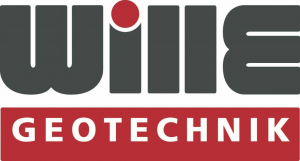6. Evaporation, Drying, Cracking in Energy Geomechanics
Lecturer
Tomasz Hueckel
Content
Uncontrolled drying, or more general gas invasion into wet solid, is a likely harmful process for most of bi-phase materials, as it potentially leads to cracking, which in turn affects number of mechanical and transport (hydraulic, electric, and thermal) properties of materials. Desiccation cracking of geomaterials is of critical importance in a variety of circumstances, from hydraulic barriers, road building, construction of levees, to agriculture practice. But a controlled evaporation can also be beneficial in many industrial applications, for instance in bio-technology. That includes techniques for drug delivery in evaporating liquid environment, or patterning in micro- and nano- materials using liquid instabilities. In Energy applications, drying affects negatively all sorts of geotechnical barriers, in nuclear waste and coal mine waste disposal, CO2 sequestration processes, gas/liquid interface control, to mention a few.
The processes of drying are quite complex and constitute a sequence of phenomena of different physics, all coupled together in a quite involved manner, not at all understood completely. One of the reasons for a slow progress in the understanding is that studies of these phenomena, conducted in separate areas were often lost in details of individual applications or specificities of the materials, without an opportunity of a comprehensive vision of the scenarios of phenomena involved and their description within a framework of multi-physics, multi-scale theory.
A proper understanding of the mechanisms associated with desiccation is a key to the prediction and possibly prevention or at least reduction of a potential for material cracking during drying, a prediction and control of industrial processes stimulated by evaporation flux. Desiccation shrinkage is a major cause of material desiccation cracking when kinematic constraints of any source are present, either at the boundaries, or via internal inhomogeneities of all kinds. Notably, drying is often enhanced by a simultaneous heating.
In summary, drying and cracking in granular, particulate and to some degree, crystalline two-phase materials appear to develop following a complicated multi-phenomenal scenario of several distinct stages: (a) external surface evaporation flux induces a Poisseuille-type flow of water in the pore-vessel system; (b) the resulting suction generates shrinkage of the solid; (c) any kinematic constraint to the shrinkage results in associated reactions and hence increase in tensile total stress; however, the resulting effective stress in the solid is paradoxically compressive due to the presence of the high suction and relatively low total stress; (d) as the configuration of the evaporating interface b/w water and gas evolves, the latter becomes intermittently unstable, and an unstable air entry into the liquid body takes place; (e) the air entry perturbs the stress distribution within the body, producing a total stress concentration at a tip of the air inclusion; (f) the local total stress magnification converts the effective stress into tension, initiating a fracture propagation and hence a crack; (g) cracking changes the stress distribution and exposes newly generated crack walls to an internal evaporation, thus resulting in proliferation of secondary cracks and accelerating the drying – cracking process.
The lecture will review the physical bases of the phenomena involved and experimental evidence. Elements of the related constitutive modeling will also be discussed.



